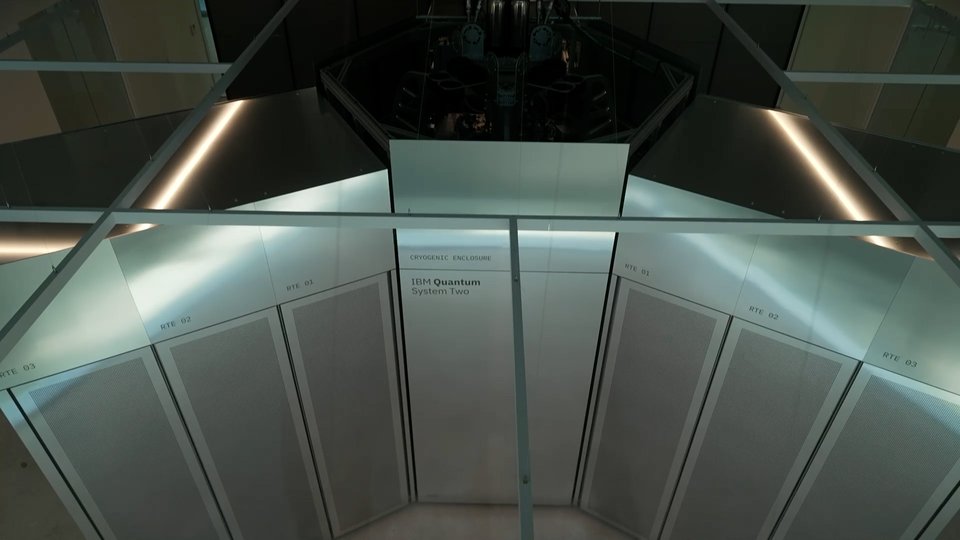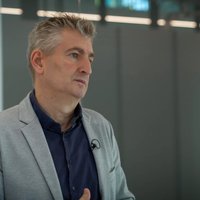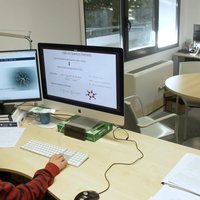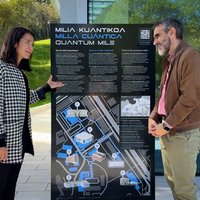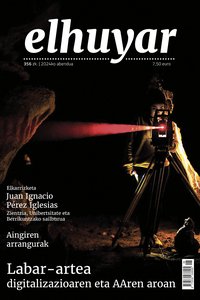Salmon Hórreo
Salmon is a good and appreciated migratory fish of the family Salmonidae. Its peculiarity is that after a long trip in the sea, it returns to the river of origin to reproduce and die.
The season of fertilization usually lasts between December and January and usually salmon females reproduce only once throughout life. Salmon reproduce in shallow areas of pebbles. The females with their tails move the stones and under them make a brush. The larva embryonic phase lasts approximately three months, until March. The main dangers of this phase are that suspended particles in the water fill the brush and choke eggs, treading tractors and mountaineers.
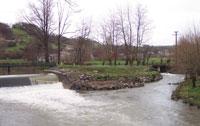
Three months later, the fry leaves the stones and begins to spread around. At first they are directed to water currents, but as they grow they need more space, they extend to other places.
According to the growth, after one or two years they head to the sea to start a journey from six months to three years. The salmon that travel further up reach western Greenland. Those who send fairly quickly, however, reach sexual maturity when they are close to Ireland and have no time to reach Greenland. They do not eat anything during the whole turn. They take advantage of the smell to know which mouth of the river they have to enter to reach the breeding area.
They are young salmon that travel from five to four salmon that return to Euskal Herria. The first to climb the river in spring are the oldest salmon, with trips in the sea between two and three years. The climb is interrupted by the low flows of August, but after the summer break, the youngest salmon begin to ascend with the first floods of autumn.
Urdazuri River
In 1980, researchers from the INRA of Senpere (National Institute of Agronomic Research) and fishermen from the area jointly initiated the project of study and control of salmon dynamics in Urdazuri. The salmon was about to disappear.
The choice of the Urdazuri River to conduct a study on the dynamics of the salmon population has simple and practical reasons. And it has the right conditions to carry out such research. On the one hand, it is essential that there be a salmon river vocation and, at the same time, be of investigable size. In fact, rivers like Aturri and Bidasoa, although salmon, are too large for researchers to control all fish.
The Urdazuri River is 45 kilometres long. Between Navarra and Senpere it is a river with quite high currents and slopes, but from there the speed of the water slows considerably and the width of the river increases considerably. The entire 238 km 2 basin can be monitored and controlled, and it seems that agricultural production is not very polluting. The water flow is also not high, with an annual average of 5.4 m 3 /s, although it presents periods of flooding and styling.
Initial work and objectives
The plan, launched by researchers and fishermen around 1980, had two main objectives: repopulation of salmon in the Urdazuri River, while researching the behavior of this species and population dynamics.
In 1980 there were only 30 mature salmon and, in addition, the Uxondoa waterfall, 4.5 km from the sea, prevented them from reaching the breeding areas. To change this situation, in addition to introducing salmon and eggs, they found it necessary to install the necessary facilities to overcome these obstacles.
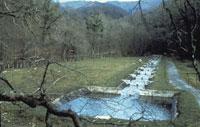
Repopulation began with the introduction in 1986 of salmon eggs and nursery salmon. At that time the Scottish eggs were in fashion, so they began to introduce them, but soon they realized that this was not the way, they did not grow well. In view of this, they began to introduce the local salmon.
Over the years scales were placed in waterfalls and in 1990 it was decided not to introduce more salmon. Natural reproduction was sufficient to ensure the amount of salmon.
Salmon behaviour and population dynamics have been under investigation since 1985. The work of researchers is to identify the characteristics of each stage. That is, how many eggs they produce, how many salmon come out under the stone, how many are dizzy, how many come back, how far they travel, etc. has been analyzed. To carry out this work, researchers have facilities such as the Uxondo Trap for the control of salmon rises, artificial breeding facilities and the Lapitxuri Creek, conditioning and care for natural reproduction.
The Uxondo trap is visited twice a day to collect data on length, weight, etc. of the salmon trapped. The Lapitxuri River analyzes the fertilization and embryonic phase of larva. The viewpoint is located on the banks of the river, underground. They observe the fertilization and embryonic phase of a large glass window adapted to the height of the riverbed.
River Bidasoa
One of the greatest riches of the river Bidasoa is its rich ictiofauna, since the Bidasoa and its tributary Endara are the only rivers of Hego Euskal Herria that carry salmon upstream. This is due to the low industrialization of the villages of the Bidasoa valley, which allows water quality to be relatively good. However, industrial and organic waste from Irun, Hondarribia, Bera and Lesaka has increased in recent years.
Reduced flows and increased water temperature caused by hydroelectric power plants have also caused damage to the fish population of the Bidasoa River. In any case, in recent years the Government of Navarra has promoted a project at the Oronoz-Mugaire fish farm to prevent the loss of salmon from the Bidasoa River. There is a direct relationship between the abundance of salmon in recent years and the work done, as a serious remodeling is underway.
Compared to the rest of the rivers in the Basque Country, the Bidasoa is in perfect condition, but not without risks. In addition to the damage caused by the aforementioned industrial and organic waste and hydroelectric plants, both in Gipuzkoa and in Navarre, the river pipeline projects must be added.
Salmon on the river
Last year around 10,000 salmon were released marked on the Bidasoa River, Oronoz Mugaire. They were released in the surroundings of the Endarlatza dam, so the previous year the work started with the fertilization of the eggs ended.
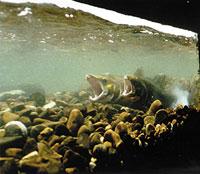
To mark the salmon they made a steel micromark on the nasal cartilage of the fish. These microbrands are made up of six binary codes, so there is no problem identifying each salmon. In addition, in the case of salmon, microbrands are controlled internationally. Thus, when a salmon is caught in any river in the world, it is not difficult to know its origin.
The Bidasoa salmon marking campaigns began in 1989 with the aim of knowing on the one hand the influence of the repopulation sessions and on the other the number of salmon returning.
In fact, in the 1960s, the red light of the alarm was lit on the Bidasoa River, due to the drastic drop in salmon catches. In the following years the downward trend of catches did not stop. In 1982 it sank. No salmon was caught that year.
Since 1989 more than 115,000 salmon have been marked on the Bidasoa River and the return of more than 4,000 has been controlled. Of these, about 60% came from the river itself.
Last year 44 salmon were captured on the Bidasoa River, far exceeding the average of 35 since 1985. However, the 2001 season was better, with 69 salmon caught. The best season of recent years was that of 1976 with 80 catches. This year, a week after lifting the ban, Oronoz-Mugaire salmon has been the first.
Fishing in the river
Bidasoa
- The season ends the second weekend of July. If 75 salmon are caught before that date, the fishing season will close. However, authorities can raise that amount to 100 salmon.
- All salmon under 40 centimeters must be returned to the river.
- Only one fishing rod is allowed.
- Catch a salmon per day and per angler at most is allowed.
- If there is another angler waiting for the turn, the maximum fishing time will be 20 minutes.
- To bring and sell salmon is essential the original guardian.
What is the contribution of fish farms?
In the world there are about 6 billion inhabitants and that number is increasing. Among other things, fish consumption is also much higher. To address this problem it is considered that fish farms can be a suitable solution. However, the contribution of these nurseries is under discussion. Is the fish population increasing or decreasing, including fish farms?
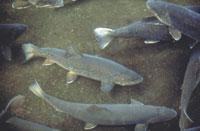
In the period between 1987 and 1997, production in fish farms has doubled. If production increases, consumption also increases. In fact, about a quarter of the fish eaten in the world belongs to fish farms. However, it is necessary to analyze the influence of these crops on ecosystems and marine resources.
Ecological condition
Some types of aquaculture, including shrimp and salmon, can damage coastal resources and reduce the number of marine fish. Other types, usually the most vegetarian species, do not cause this type of damage. Thus the paradox arises. Aquaculture can be a way to increase the number of fish, but it is also a factor of depletion of marine life.
Between free and farm fish there is competition with the supply of coastal ecosystems. They also have economic linkage or competition at the time of market placement. The idea that is spreading in the current debate is clear: the future of aquaculture will set the amount of fish generated at sea.
Currently more than 220 species grow in fish farms. When conducting business, two main trends are observed, that of exploiting ownership and participation in these cycles without altering natural cycles. In the latter there are also different behaviors. Some have a severe influence, eliminate predators from fish, control competition, etc. Others, for example, only deal with the food supply.
Fish breeding methods are very varied. Marine fish usually grow in mesh cages. Waterways often grow in artificial ponds integrated into ecosystems close to agriculture.
In the last decade two types of companies have been created around fish farms. The first are large and grow animals of high added value for sale in large markets. The latter are nurseries of regional supply, but also of great diffusion. The cooperative and family businesses grow low-priced species and sell them in certain markets.
In fact, the dynamics of aquaculture fish markets vary greatly depending on the species. The proliferation of fish farms can help preserve natural reserves. In addition, the decrease in prices of animals from different farms can mean a significant decrease in the expenditure of catches. Some species can replace others.
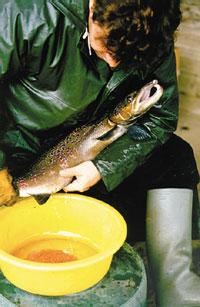
However, it does not occur with other species. For example, in the case of salmon, despite increased farms in recent years, catches have also increased. In fact, in recent years in the world catches have increased by 27%.
According to all calculations, fish farming is an activity of more than 2,000 years. This activity began to develop in the east, but spread to Europe for the Middle Ages. In the 1970s, techniques were developed and salmon and trout crops started in Norway and Scotland. Currently, in addition to cultivating sea bream, sea bass, turbot and other fish, algae, mussels, clams and oysters also grow. Freshwater fishing is much more widespread and technically controlled than sea fishing.
Fish farming is an industry with high demands for water quality, but generates large amounts of waste, food waste and animal excretions, making it a great pollutant. However, in addition to these residues, fish farming has another negative part, although less evident, but dangerous: the flight of fish. These fish can pose a risk to wild species, especially if genetically modified fish are used for breeding.
The breeding process of many fish species is very long, especially from the point of view of the breeder, so the goal of many is to shorten the growth period. Therefore, in this industry a long way of genetics is also foreseen.
The first genetic manipulations with fish suitable for cultivation have aimed to introduce a gene responsible for the growth of man or another animal. The experiences have been made with tents, salmon and trout and, at least initially, the results have not been as satisfactory as expected: these fish, despite their rapid growth, presented unattractive malformations for marketing.
But scientists are stubborn and did not completely rule out the idea of genetic transformation. Canadian researchers came up with manipulating the salmon breeding gene and, after several tricks, bingo! Salmon grow twice as fast! Although the law has not yet allowed the commercialization of genetically modified fish, the legislation soon adapts to technological and scientific advances and soon we can see them in our menus.
Published in D2 section of Deia.
Buletina
Bidali zure helbide elektronikoa eta jaso asteroko buletina zure sarrera-ontzian



